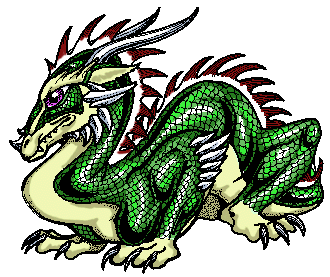Introduction
Drake is a common dragon type in popular culture. Owing to the complex history of Drake as both a word and a popular last name, some clarification is needed in regards to the Dragon Type of Drake.

Drake by Dee Dreslough.
Etymology
In Middle English, drake means 'dragon,' following the Old English drake, which means 'dragon, sea monster, or huge serpent.' Drake likely relates to t he proto-Germanic drako as well as the Latin draco, both meaning 'dragon.' These tie back to the Ancient Greek word drakon, believed to come from drakein or derkomai, 'I can see clearly.'
The words dragon and drake separated around the thirteenth century when drake became an archaic Old English word that means dragon. Around this same time, drake indicated a male duck. Perhaps for this reason, the drake is considered to be a small dragon.
Disambiguation of Drakes
Traditional myth presents with two creatures named Drake. In the Balkan states, the Gypsy community's Drake is a dragon with a humanoid body and no wings and rides upon a dragon. [1] In Europe, specifically Sweden, drake is synonymous with Lindorm, an enormous serpent. [1]
In the late twentieth century, the word drake became used as an indicator of a type of dragon, especially in European legend and heraldry. Drake is therefore a distinct dragon type.
Physical Description
The drake is a dragon with four limbs, much like a lizard, although usually far larger in size than the average lizard. A particularly potent example of a drake in the natural world is the Komodo Dragon, a large species of minotaur lizard in Indonesia. These particular creatures have low-slung bodies, much like crocodiles and alligators, with their bellies lying across the ground.
The term drake has been used mostly in Europe and North America, although this types has a particular shape fitting to other dragon species beyond that region. Consider the Taniwha, a powerful creature to the Maori people of New Zealand. Taniwha often appear in the form of gigantic tuatara, which are lizards indigenous to New Zealand.
Footnotes
For more information on footnotes and references, please see the bibliography.

